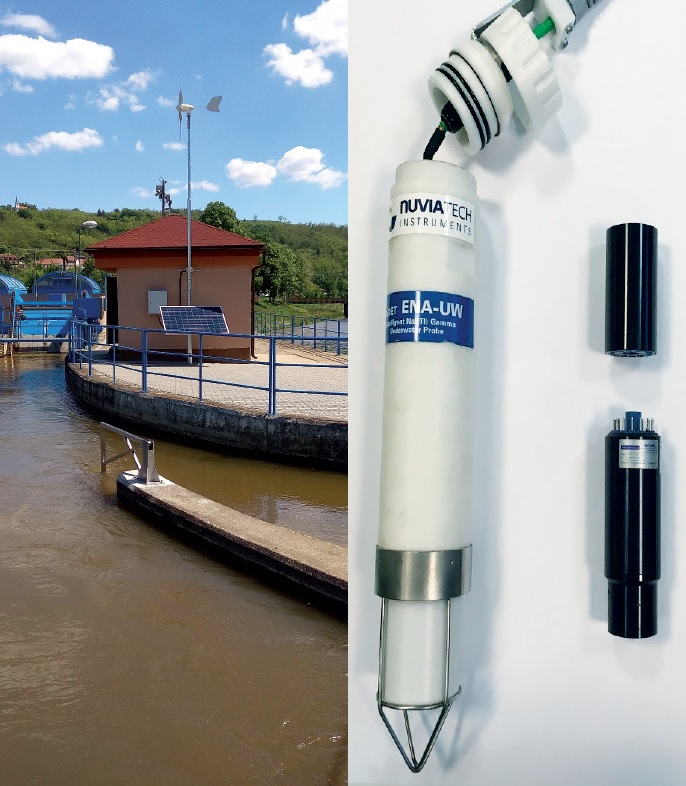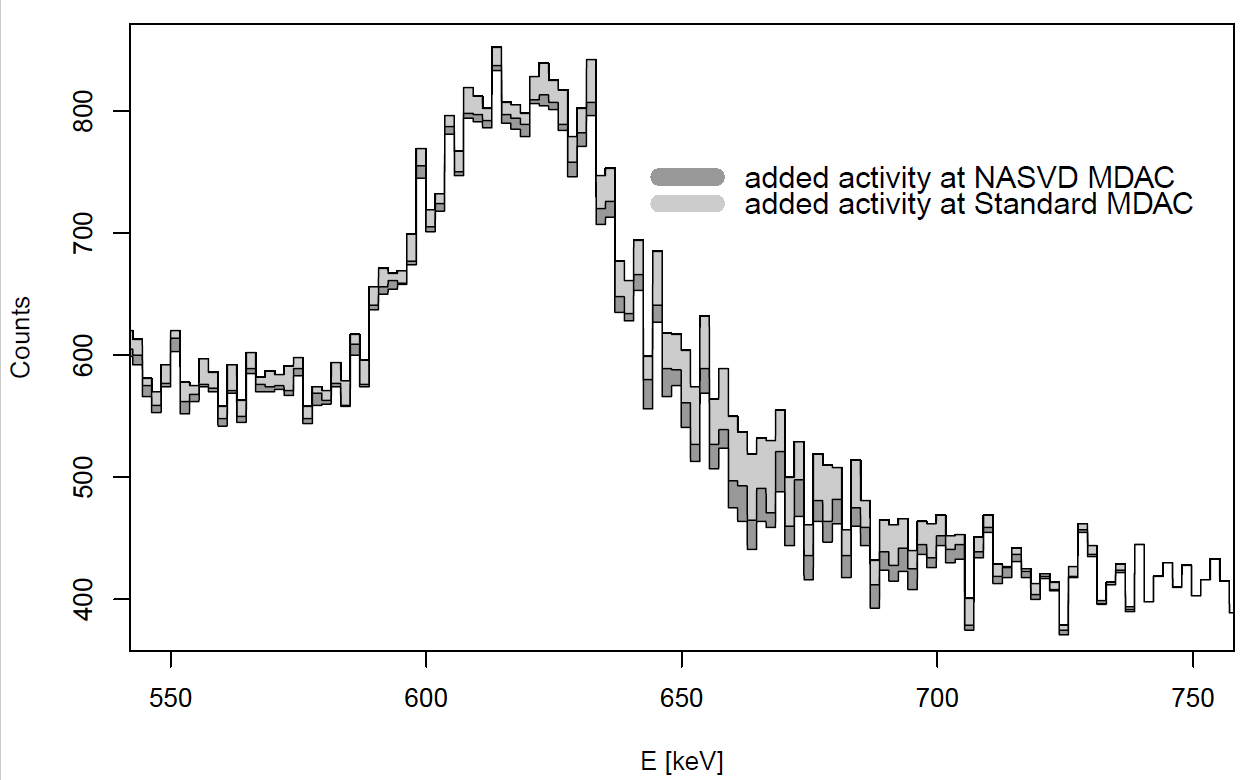Autonomous station for measurements of artificial gamma activity in surface water bodies
In the field of emergency preparedness we can see a general trend to maximize utilization of continuous measurements performed by automatic and autonomous devices. National Radiation Protection Institute (SURO) in collaboration with NUVIA introduced an automatic “stand-alone” system for continuous monitoring of artificial gamma radioactivity in surface water bodies.
The main reasons why launching of such system is beneficial:
- Conventional “grab-sampling” supplies only minor time coverage (≥6hour sampling period for Emergency monitoring).
- In the conditions of an emergency situation, conventional “grab-sampling” can be risky and, therefore, non-reliable.
- Automatic “stand-alone” monitoring system supplies data despite the consequences of an emergency situation including general electric power blackout, without additional human resources burden.
- In the emergency situation, full-time coverage of monitoring can supply not only required information about water contamination, it can also simultaneously supply complementary information useful for verification of mathematical models determining radioactive plume migration and deposition localization.
- Surface water bodies cover 51.7% of drinking water sources in the Czech Republic (CR). Protection of surface water against radioactive contamination is therefore a task of high priority in the CR.
Device structure
The described device was developed in collaboration of SURO and NUVIA Group in years 2017 – 2020. An established approach used for ocean water stations of non-shielded submersible NaI(Tl) probe was chosen (a shielded tomb is more usual approach in the environment of river water), and sensitivity of the monitoring system was reinforced by sophisticated mathematical deconvolution method NASVD (Picture 1).

The entire system consists of two parts, an underwater probe and an on-land external control unit. The submersible unit itself contains a 3 in x 3 in NaI (Tl) detector. Energy resolution at 661 keV 137Cs is 7.5 %. The total weight of the unit is approx. 10 kg.
The control unit consists of the embedded PC and a communication module which sends the data to the central server via GPRS or satellite connection. The power supply of the entire system is modular, it can be chosen between a standard connection to the power grid and/or to a solar panel accompanied with 900 Ah lithium cell. This transforms the device to a fully autonomous system.
System sensitivity and NASVD method
The detection capabilities of the device have been tested in the laboratory conditions, semi-field conditions and, eventually, a network of three monitoring stations was installed in the field conditions of river environment within the Czech Republic. These locations are river Vltava in Prague, river Jihlava in Ivančice (proximity of NPP Dukovany) and river Vltava in Kořensko (proximity of NPP Temelín).
Such measurements with submersible non-shielded gamma probe are loaded by enhanced gamma activity background contributions. It originates from cosmic and terrestrial radiation in the river environment. Even stronger factor enhancing background response is the abundance of radon progenies flushed in the river water from the air and from the river banks by rain. This is strongly unstable and, therefore, really betraying contribution especially when a crucial 137Cs is being analysed regarding a spectral interferences, e.g. 137Cs and 214Bi.
A method called the Noise Adjustment Singular Value Decomposition (NASVD) was employed to lower the detection limits. This method belongs to the deconvolution algorithm family which treats spectrum analysis as a regression procedure (Hýža and Rulík 2017). The more unfavourable conditions are, the stronger is improving effect of NASVD method. In the most unstable conditions, NASVD method can lead to detection limits lowered by factor of 4 apart from the conventional method (Picture 2).

A long-term testing proved that described device fulfils the most rigorous legal requirements for emergency monitoring in the water environment (5 Bq/L for 131I and 137Cs) within integration time of up to 10 minutes (SÚJB 2016).
When 60m integration time was applied in the real river environment, mean Minimal Detectable Activity Concentration (MDAC) values were 0.83 Bq/L (location Praha), 0.50 Bq/L (location Ivančice) and 0.21 Bq/L (location Kořensko) for 137Cs. Such differences of the MDAC levels proved that differences in hydrological conditions can strongly influence monitoring sensitivity of non-shielded structure.
In the conditions of relatively shallow and fast flowing water, described monitoring system reaches MDAC levels enhanced by factor of ~ 1.4 in comparison with the shielded structures (Fejgl and Hýža, 2019). In the favourable conditions of deep and rather stable water, the sensitivity is capable to fulfil more strict legal requirements for routine monitoring (0.1 Bq/L for 137Cs), when slightly longer integration time is employed. Such sufficient sensitivity is gained thanks to NASVD method (Fejgl and Hýža, 2020).
Fejgl M., Hýža M.: Development of an autonomous station for measurements of artificial gamma activity in surface water bodies. J. Environ. Radioact., 2019, 204: 42-48.
Fejgl M., Hýža M.: Zdokonalení systému kontinuálního monitorování radioaktivní kontaminace povrchových vod využitím výpočetního algoritmu, Časopis VTEI, 2020 (4): 44-47.
Hýža M., Rulík P., 2017. Low-level atmospheric radioactivity measurement using a NaI(Tl) spectrometer during aerosol sampling, Appl. Radiat. Isot. 126, 225-227.
SÚJB, 2016. Regulation number 360/2016 Sb.: Monitoring of the radiation situation. 143, 5642-5689.